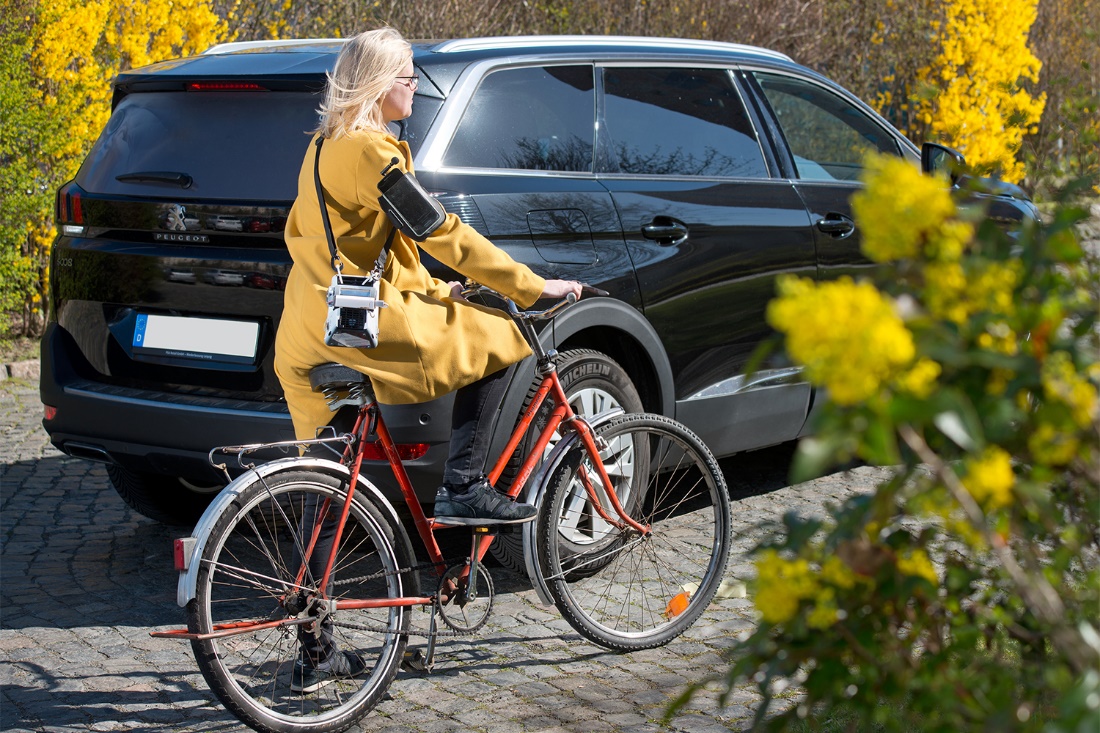Environmental pollution in city traffic
How strong are Leipzigs cyclists and pedestrians affected by environmental pollution in city traffic?
 Figure 1: Participant wearing the mobile sensors
Figure 1: Participant wearing the mobile sensors
Cities worldwide suffer of increasing temperatures, air pollutants, and noise. Such urban environmental factors are only registered at a few measuring stations. We want to know where and when the people of Leipzig are exposed to harmful environmental factors in their everyday life: Are there multiple exposures, e.g. heat, particulate matter, and noise at the same time? Which people are particularly affected? How do cyclists and pedestrians perceive air, noise, and thermal stress in summer and how does this agree with the measured data, especially during heat waves?
The DGF project ExpoAware started in February 2020 and aims to investigate exposure of individuals to environmental pollutants on their daily ways through the city as well as to explore the behavior and decision motives of individuals during everyday mobility. Despite diverse covid-19 restrictions in public life we managed to receive more than 300 registrations for our study in 2020 and started in July 2020. The participants have been equipped with a set of mobile sensors (Fig. 1) consisting of
a) Smartphone for GPS, acceleration, light, and noise
b) Gas sensor for NO2, NO, CO, O3, as well as temperature and humidity
controlled via smartphone app
c) Particle tracker counting number of small and large particles
With the help of a smartphone app specially developed for the study, we also collected data about the kind of way (Fig. 2). About 20 participants were assigned for each week and were randomly grouped into a measurement group and a control group. Around 48% of those registered took part in the measurement and completed the questionnaires. In the next steps we will analyze the environmental data using methods of scientific visualization, visual analytics and pattern recognition as well as combine it with the subjective data from the questionnaires. In addition, we will test the effects of wearing a mobile sensor and receiving feedback about personal exposure on psychological variables such as threat appraisals and different forms of coping e.g. intentions to change mobility behavior.
 Figure 2: Prepared devices at the issuing office at Leipzig University
Figure 2: Prepared devices at the issuing office at Leipzig University